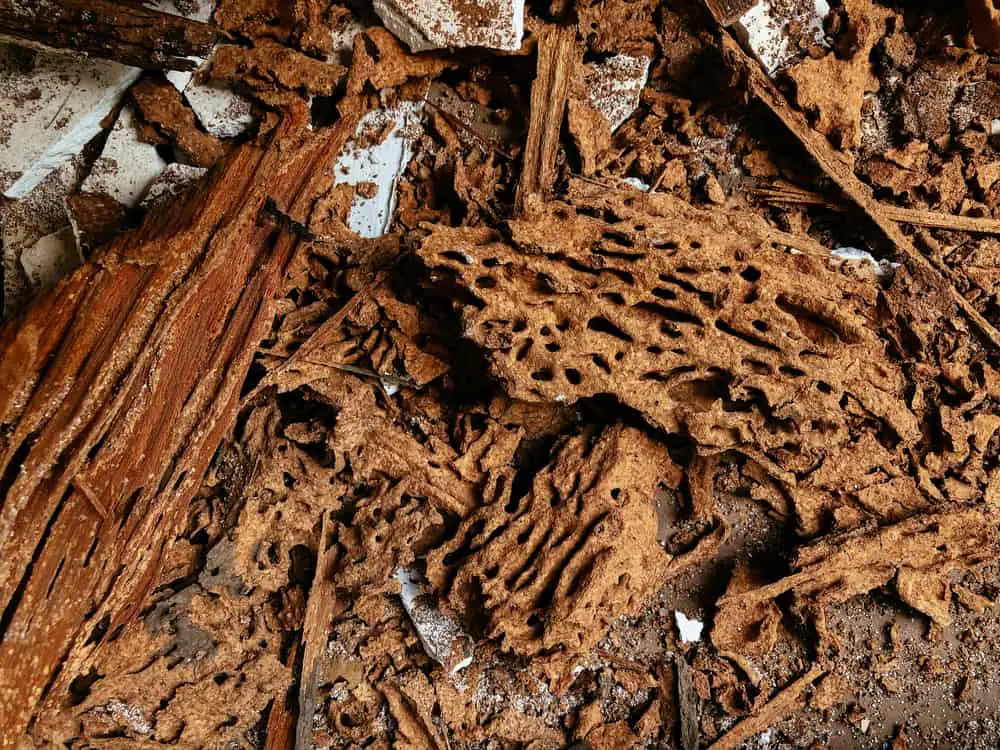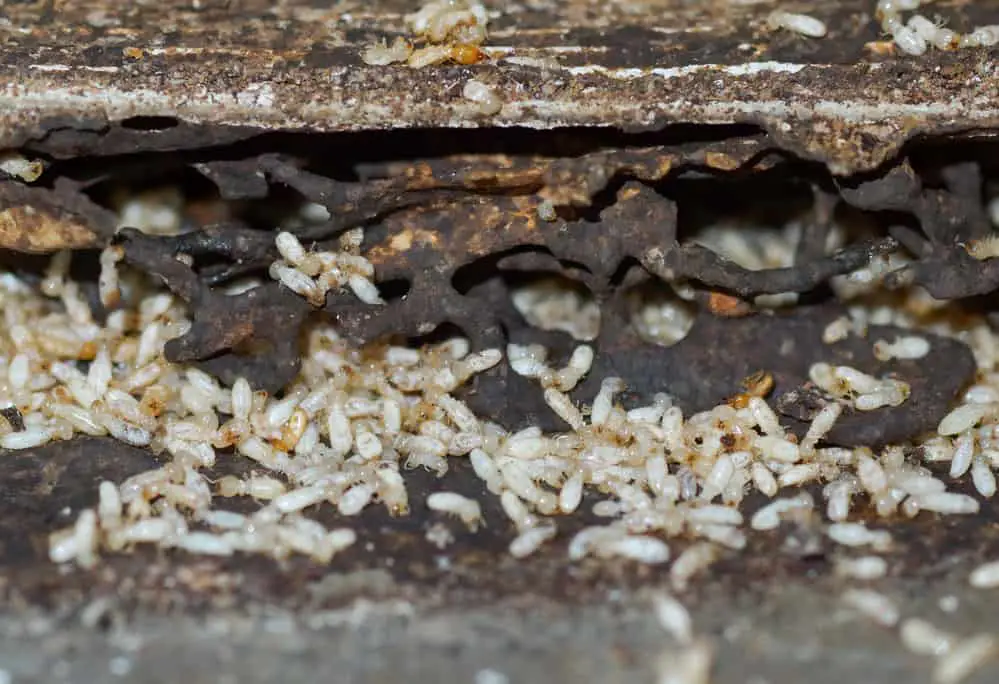Termites don’t need decades to destroy a home. Instead, these pests work silently and efficiently, chewing away at the wood structure of your home. Then, by the time you know they’re there, your home might be damaged beyond belief, racking up thousands of dollars in repairs. They can destroy your home in as little as a year, provided the colony is large enough and the conditions are right.
Key Points:
- Termites can cause damage to a home in as little as a year if the colony is large enough and conditions are right.
- Age and size of the colony, moisture levels, and temperatures are all factors that impact the speed of termite destruction.
- Termites can go undetected for long periods of time, so it’s important to monitor for their presence continually to minimize the damage they can cause.
Because of their silent efficiency, it’s essential to monitor their presence continually. Here’s what you need to know about termites and their destructive abilities.
How Long Does It Take For Termites To Destroy Your House?
Termites are quick – they don’t need decades to wreak havoc on your home. As mentioned, they can destroy your home in as little as a year or even cause extensive damage in just a few months. Of course, a few things impact the amount of time it takes to destroy your home.
Minor Damage Time Frame
A colony of termites works fast, but if you catch on to them quickly enough, they won’t have enough time to wreak havoc on your home. They’ll still cause damage as they munch through the wood structure, but it won’t be as bad if you catch it fast enough.
They can cause minor damage within 24 hours, as a mature colony can consume about one pound of wood in a single day. So, if you give them a few days or a week, they can cause some damage. Although it may not be considered extensive, it’s nothing to scoff at.
Extensive Damage Time Frame
It takes longer for the termite’s work on your home to reach destructive levels. On average, a mature colony of termites can cause extensive damage in your home in between three and eight years. While that might seem like a long time, these colonies can go undetected for months or even years. So, by the time you realize they’re there, they might have been there for years already.
That said, there isn’t a pinpointed exact number of days or years before a termite infestation completely destroys your home to the point that compromises the home’s structural integrity. This is primarily due to the variations of factors that impact the destruction speed.
Factors That Impact The Destruction Speed
As mentioned, a couple of factors affect the speed of the termites’ work, including the age of the colony, moisture levels, and temperatures.
Age And Size Of The Colony
The size and age of the termite colony play a significant role in how fast they destroy your home. Clearly, a smaller, less established colony would take longer to cause substantial damage than a massive, mature colony.
The older the colony is, the larger it gets. The king and queen of the termite colony need to reproduce multiple times before the colony grows to its full potential. Younger colonies can have upwards of 100,000 workers ready to destroy your home, whereas older colonies can have nearly three million termites.
So, it could take more than five years to cause substantial damage with a younger colony. However, since the colony will continue expanding as the years pass, it’ll happen quicker and quicker. Conversely, an older colony with millions of termites could destroy a home in as little as a year or two.
Moisture Levels
Although the size and age of the colony play a massive role in the destruction speed, their environment needs to meet specific requirements to keep up rapid rates. The colonies moved slower or faster based on the conditions around them.
Termites thrive in hot and humid conditions, growing, reproducing, and blazing through your home’s structure. If the environment is too dry, they risk drying out and dying. So, if your home has water pooling around its foundation, it could act as an attractant for termites. On top of that, the water source will aid in their work, helping them work even faster.
Temperatures
In addition to moisture levels, termites need specific temperatures to thrive. They love warm to hot temperatures and work best in the heat. The termites can’t work as quickly or efficiently in cooler months, like the late autumn to early spring in colder environments.
The colder temperatures slow their progress, potentially leading to a grinding halt. If you live in a dry, cooler climate, you might not have issues with termites. However, if you live in a warm, humid state, you must remain vigilant to ensure an infestation doesn’t take over.
However, termites don’t have a permanent address, so they’ll happily move anywhere there’s food and suitable conditions. So, ensure you continually monitor for their presence to catch them before they wreak havoc on your home.
How Fast Can A Termite Infestation Happen?

Once termites find something good to munch on, they don’t wait around. Instead, they call in the calvary, bringing hordes of their friends with them to begin destroying your home. A termite infestation can quickly occur within the span of a few days.
After the termites find your home, they quickly multiply to infestation numbers, creating a major problem for your home. The size of a termite colony usually hovers around 60,000 but can climb as high as three million! Of course, it takes a bit for the colony to grow to this size, but it happens faster than you probably think.
The speed and efficiency of termite infestations place a heavy responsibility on the homeowner, as damage can occur rapidly.
How Can You Tell If Your Home Has Termites?
You might notice the doors in your home are becoming tougher to close than they used to. Or, maybe you notice a strangely spongy portion of the bedroom floor. These symptoms can point to termites residing in your home. Unfortunately, if you notice these signs, there’s a good chance they’ve already caused substantial damage.
So, early detection is an essential part of avoiding extensive damage to the mouths of termites. There are a few key signs of termites to keep an eye out for, including the following:
- Drooping or discolored drywall
- Tiny holes in the drywall
- Wood that sounds hollow or empty when you tap its surface
- Peeling paint on walls and wood structures that resembles water damage
- Crumbling wood
- Stuck windows or doors
- Windows or doors that are difficult to open or close
- Loosened tiles
- Buckling laminate or wooden floorboards
- Overly squeaky floorboards
- Flying termite swarms around your home
- Piles of wings leftover from swarms on your floors, window sills, and other surfaces in your home
- Piles of termite pellets, somewhat resembling salt or pepper
- Mud tubes made of soil scaling the foundation of your home (these are what subterranean termites use to connect the colony to the food source)
- Patterns in the floorboards, walls, or furniture that resemble mazes


